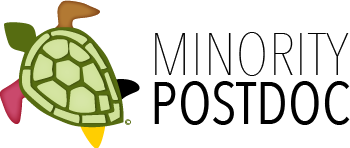Recap of the #NAJA31 Best Practices for Science & Health Reporting session.
Science journalism has many hurdles, but reporting in and about Native American communities brings its own challenges. At the 2015 meeting of the Native American Journalists Association, students, academics, and professionals gathered to discuss journalism in indigenous communities. In a panel titled Culture Matters: Best Practices for Science and Health Reporting in Indian Country, Terri Hansen, Dr. Cynthia Coleman, and Dr. Teresa Lamsam discussed those challenges and how to overcome them. The session, moderated by Dr. Alberto Roca, had a dual focus on representing Native American concerns in journalism and the resources available for emerging Native science journalists.
The session began with Roca, Executive Director of DiverseScholar and Founding Editor of MinorityPostdoc.org, listing useful science journalism resources, including graduate programs in science communication, professional societies such as The National Association of Science Writers and online resources like The Open Notebook. Some of the resources discussed by Roca and the other panelists are listed at the bottom of the session's webpage.
The first speaker, Portland State University professor and Osage Tribe member, Dr. Cynthia Coleman, focused on the story of Kennewick man, a nine thousand year old skeleton discovered in Kennewick, Washington, in 1996. While scientists wanted to study the incredibly intact remains, the Umatilla people and other Native American tribes wanted them returned. What resulted was a 9-year-long, heavily publicized, battle over the remains [Taylor 2013]. Dr. Coleman said that in this case, as in many such cases where Western science butts heads with Native values, media coverage consistently favors the science. "Every time science gets deployed as a rationale for the ability to study these bones, the Indian concerns are delegitimized as irrational, superstitious, and just plain silly," she said.
the need for Native journalists to report...has never been greater
In the end, Kennewick man did have a DNA link to local tribes, but the coverage of the issue depicted Western science as acultural and therefore superior. As desirable a goal as it may be, Dr. Coleman acknowledged that "You're never gonna bring up Indian concerns up to the same level as empirical science." Instead, she said, "we first need to acknowledge that science is culturally bound. It's not separated from cultural underpinnings." In order to respect both Western science and Native American concerns, we must shift our perspective to value what's important to all involved parties instead of placing one group's concerns over another's.
Terri Hansen, a journalist and member of the Winnebago Tribe of Nebraska, concurred, elaborating that Western science and Native American cultural knowledge often collaborate rather than compete. For example, Hansen said, in 2006 the tribes of western Washington began noticing an increase in dead marine life as well as other alarming changes all along their coastline [Peninsula Daily News 2010]. In 2010, it was covered in a Northwest Indian Tribal Fish Committee meeting and eventually government scientists were brought in to study these effects of climate change. "Because of issues like this and because of the increasing climactic changes, science is becoming very important in Indian country as tribal communities face these escalating changes," Hansen explained, continuing that "the need for Native journalists to report related rapidly-evolving science and technology has never been greater" [Hansen 2011].
The session concluded with further discussion between Coleman, Hansen, and University of Nebraska at Omaha professor Dr. Teresa Lamsam on finding resources within the Native American community. Because Western scientists clash with Native experts so often, a strong sense of distrust can make it extremely difficult to find Native sources willing to speak to journalists. As journalists, we need to address this distrust by respecting Native American knowledge and culture, by being careful about our representation of Native American communities, and by increasing diversity within the journalism community.
References
T. Hansen (2011) Tribes: The Overlooked U.S. Climate Delegate, TerriHansen.com, Jan 19
Peninsula Daily News (2010) Makah Marine Mammal Stranding Office Receives Grant, Sep 22
K. Taylor (2013) The Long Legal and Moral Battle Over Kennewick Man, Indian Country Today Media Network, Apr 25
The citation for this article is:
L. Crane (2016) Native American Journalists on Science and Environment Reporting. DiverseScholar 7:1
Leah Crane is a freelance science writer/editor and graduate in Physics/Astronomy and European Studies from Carleton College. She is interested in science communication, science education, and space. She can be found on Twitter at @DownHereonEarth. Any opinions expressed in this article are solely those of the author.
Originally published 16-Nov-2016
Diana Crow assisted in editing this article. DiverseScholar is now publishing original written works. Submit article ideas by contacting us at info@DiverseScholar.org. This work is licensed under a Creative Commons Attribution-Noncommercial-No Derivative Works 3.0 Unported License.
![]()
